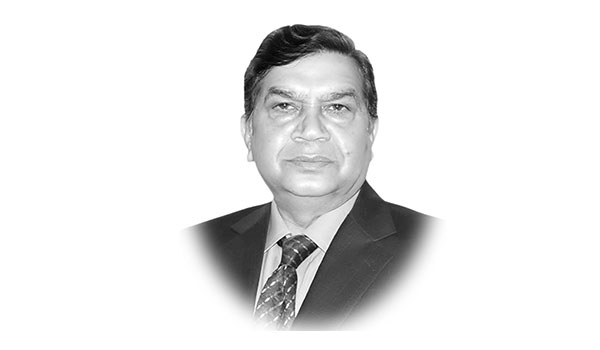Demise of outdoor life
OF all the number of parks and playfield in Rawalpindi, the historical Company Bagh, named after the East India Company (renamed as Liaquat Bagh in the 1960s), had special significance for a number of reasons such as unfortunately it is the place, where first Prime Minister of Pakistan, Nawabzada Liaquat Ali Khan and first women Prime Minister of the Muslim world, Mohtarma Benazir Bhutto were assassinated in October 1951 and in December 2007, respectively.
Before Liaquat Bagh was made the central bus stand of the entire city, it was utilized by the professional entertainers on the eve for arranging melas (festivals) on Eid-ul-Fitr and Eid-ul-Azha, which used to be the main attraction of Eid festivities.
The melas used to be fully equipped with all types of means of entertainment for children, youngsters and elderly persons.
The conversion of the open areas into housing schemes by the Rawalpindi Improvement Trust in early 1960s, besides sounding the death knell for the old culture, delivered a severe blow to the traditional pastimes and means of recreation for the people of this region.
These pastimes ranged from hide-and-seek, wrestling, folk singing, folklores, gossip, etc. Eid melas continued for several days even after three to four Eid holidays.
They had entertainment gears for the people of all ages, tastes and temperaments. Their main attractions included; oscillators, mechanical swings, Maut ka Kaun’an (death well) Maut ka Golla (death shell), circus, zoo, and makeshift theatres.
The zoos having woman-faced foxes, who talked while lying on the ground inside the cages and shook their tails, were a special attraction for children.
There used to be one odd lion in zoos, but still roars of multiple lions echoed all the time throughout the venue.
Famous folk artistes Alam Lohar, Inayat Hussain Bhatti, Manzoor Jhala, Bali Jatti, etc, performed in separate theatres.
Female artistes or eunuchs, wearing women’s clothes and palms, with overly applied powder on their faces and fast red lipstick on their heavy masculine lips, performed on the high daises outside each theatre, to attract the clientele.
All the theatres remained teeming with spectators from evening till late night.
One could enjoy the live performance of his favourite artistes for two to three hours by buying a ticket for one Rupee.
Though the open spaces in the city served as wonderful venues for recreational, sports and cultural activities for the residents of Rawalpindi, the real source of entertainment for people of all ages at that time were the cinema halls.
People from all walks of life could enjoy watching a film for three hours by spending 12 Annas (75 Piasas) to Rs 2.50.
There were total of 10 to 12 cinema halls in Rawalpindi city. The most famous cinema in Rawalpindi, the Novelty Cinema, which featured only Pakistani Urdu and Indian films, was located almost right in front of our home.
Only English films were screened in 3 theatres in Rawalpindi Cantonment. I remember watching the famous Indian film Barsaat and Dag as well as Pakistani classic Naila on the Novelty Cinema.
Apart from Urdu and English films, Pakistani Punjabi films were also very popular at that time because the stories of Punjabi films also revolved around two lovers like Urdu and English films.
Sabiha Khanum and her husband Santosh Kumar used to be the most popular actors in Pakistan.
After the 1965 Indo-Pak, showing Indian films in Pakistan was banned. The war, which coincided with start of telecast by the Pakistan Television Corporation, proved to be the last nail in the coffin of outdoor life in Pakistan.
Films produced by 1970s in Pakistan and India, besides providing healthy entertainment to the viewers at an easily affordable cost, served to promote a number of genres of fine arts and literature, including poetry, fiction, drama, music, singing, dance, acting, film direction and film production.
Till mid-1970s, legendry male and female story writers, poets, directors, music composers, producers, singers and actors were associated with the film industry in Pakistan.
The advent of the first TV channel in Pakistan in 1965 coupled with the commercialization of film production in 1970s contributed to the ultimate demise of the cinema-going culture in Pakistan.
The advent of Dish Antenna in early 1990s that gave the TV viewers option of watching the channels of their choice, served as the final blow to the remainder of the outdoor-life in urban areas.
The Dish Antenna was shortly followed by Cable Networks, which increased choice of channels from about ten to over one hundred in a single leap.
Due to the advancement in the field of information technology during the same period, people of even developing countries, became chair-bound from room-bound in quick time.
The invention of Smartphone, in the beginning of current millennium, further excluded man from rest of the world, from his family, friends, relatives, neighbours, and from his own being.
The modern technology has made man truly lonely in the Global Village by having drained and dried the desire and craving for spending time in the company of family members and friends.
To pull the public out of homes to cinema houses, the filmmakers have started selling violence, hatred and falsification to make money by producing movies based on horror, crime, sex, science fiction, etc.
The transformation of arts and sports into money-making industries, changed the role of these exclusive human possessions from the pedestals of great civilizations to the platforms for spreading discord, dispute as well as delinquencies and debauchery.
The multiplication of electronic and social media in the developed as well as developing countries, among all segments of societies like the underprivileged classes and juveniles, has accelerated the proliferation of violence and crimes.
—The writer is contributing columnist based in Islamabad.










